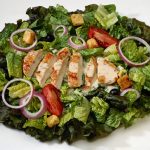
What is the perfect amount of fats and carbohydrates for a healthy diet? Scientists from McMaster University in Canada analyzed food diaries from more than 135,000 people in 18 countries around the world to find out. The answer supports the old adage that moderation is good for your heart and a longer life, specifically that eating moderate amounts of carbs and fats rather than very high or very low intakes of either is better for you — with a few twists. The carb intake of study participants ranged from 46% to 77% of daily calories. The higher the percentage, the greater the association with an increased risk of death, heart attack and stroke. Yet going low-carb didn’t convey benefits — 50% of daily calories seems to be just right, as long as you focus on fruits, vegetables and whole grains rather than white bread and other refined grains, white rice and foods high in sugar. More surprises came from fat intake. For one, people who got a full 35% of their daily calories from fat actually had a lower risk of dying than those who limited fat to 10%. And it might not be necessary for everyone to keep saturated fat, in particular, under 10% of total calories — in fact, going below 7% might even be harmful. A key takeaway is how to replace… read on >




























-300x200.jpg)







-300x169.jpg)
